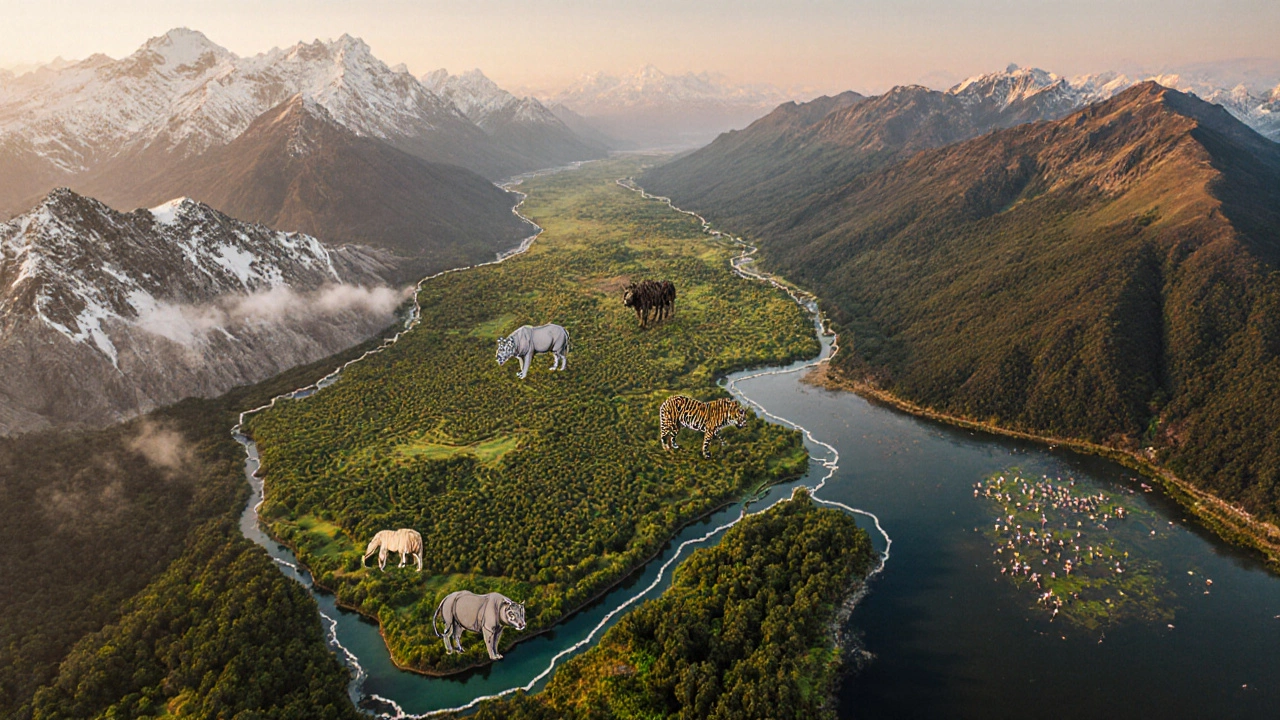SEARCH
Natural Heritage Sites in India
When exploring natural heritage sites in India, areas of outstanding natural beauty, ecological importance, and geological significance across the Indian subcontinent. Also known as India's natural wonders, they protect biodiversity, showcase breathtaking landscapes, and attract travelers seeking authentic experiences, you’ll encounter National Parks, protected landscapes that conserve wildlife and ecosystems, Wildlife Sanctuaries, areas focused on safeguarding specific animal populations, Biosphere Reserves, regions that balance conservation with sustainable human use, and UNESCO Natural Heritage Sites, world‑recognized sites for their unique geological or ecological value. These places together form a network that preserves India’s rich natural legacy while offering adventure, education, and peace.
Why explore India's natural heritage?
Natural heritage sites in India encompass a wide range of ecosystems – from the snow‑capped peaks of the Himalayas to the mangrove forests of the Sundarbans. A national park like Jim Corbett safeguards the Royal Bengal tiger, while Kaziranga National Park in Assam protects the one‑hundred‑plus‑year‑old Indian rhinoceros. Wildlife sanctuaries such as Periyar focus on specific species, giving you chances to spot elephants gathering at the lake’s edge. Biosphere reserves like the Western Ghats blend conservation with local livelihoods, showing how people can live sustainably amid dense biodiversity. UNESCO‑designated sites such as the Great Himalayan National Park highlight geological marvels and rare flora, adding global prestige and drawing responsible tourism. These sites are tightly linked: a UNESCO natural heritage designation often includes multiple national parks and sanctuaries within its buffer zone, and biosphere reserves rely on the protective framework of adjoining parks. Visiting a sanctuary usually means you’ll trek through a national park’s trails, so good trekking skills become essential. The presence of rare species influences how local communities manage resources, which in turn shapes the policies of biosphere reserves. In short, protecting wildlife, preserving geological formations, and promoting sustainable development are all parts of the same puzzle. If you’re planning a trip, think about what you want to experience. Are you after high‑altitude trekking in the Himalayas? Then the Great Himalayan National Park and the challenging Kangchenjunga region will test your stamina and reward you with pristine vistas. Prefer coastal mangroves? The Sundarbans’ UNESCO status guarantees a unique blend of wildlife and tidal waterways. Want to combine culture with nature? Many heritage cities sit near biosphere reserves, allowing you to sample local festivals and then retreat into untouched forests. Whatever your interest, India’s natural heritage sites provide a solid foundation for an unforgettable adventure. Below, you’ll find a curated list of articles that dive deeper into specific sites, trekking budgets, wildlife protection debates, and practical travel tips. Use these guides to plan routes, choose the right gear, and understand the importance of each location before you set foot on the trail.

The Seven Natural Heritage Sites in India: A Complete Guide
Discover all seven UNESCO natural heritage sites in India, their unique wildlife, locations, and how to visit responsibly.
Continue reading